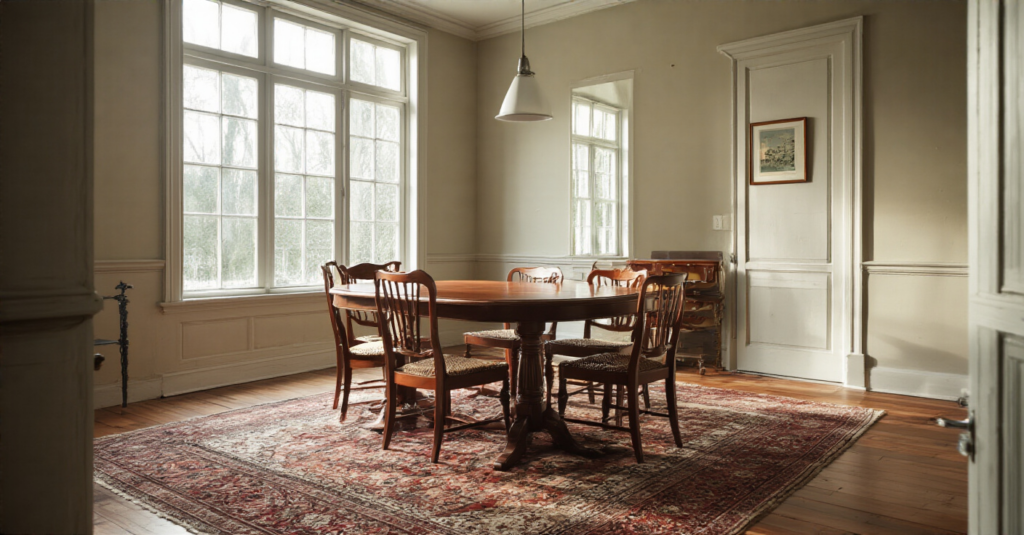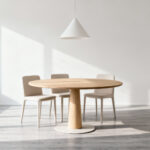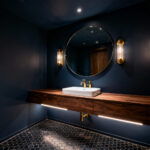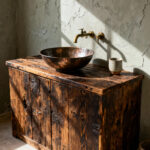Picture this: You’re standing in your dining room. But let’s be honest, you’re not really using it, are you? For 11 months of the year, it’s a beautifully decorated museum exhibit that collects dust and maybe the occasional pile of mail. It’s a room that’s supposed to be about connection and celebration, but it’s just… sitting there. Silent.
Can we talk about how crazy that is? The dining room is broken. Its whole purpose has become tied to one or two big holidays, and the rest of the time, it’s just wasted potential. I used to think a formal dining room was the height of sophistication. Then, after years of planning events in every space imaginable, I realized the most successful spaces aren’t static—they’re alive. They adapt. They breathe with the seasons and flex to fit the occasion, whether it’s a candlelit dinner for two or a chaotic Lego-building session with the kids.
The real secret isn’t about having the fanciest furniture; it’s about making smart, strategic choices that turn your dining room from a stiff, formal space into the versatile, vibrant heart of your home. It’s about creating a canvas that you can easily repaint with the mood of the season. Forget the old rules. Let’s make this room work for you.
Laying the Modern Foundation: Planning & Decluttering (Part 1)
Before you even think about paint swatches or that gorgeous chandelier you saw online, we have to do the groundwork. I know, I know—it’s the least glamorous part, but I promise you, this is the secret sauce. This is where we clear the slate and create a smart plan, so every decision you make from here on out is easy, intentional, and actually leads to a room you love.
1. Assess Your Current Dining Room’s Strengths & Weaknesses
Okay, first things first. We need to have a little heart-to-heart with your dining room. Right now, before you change a single thing, walk in and really look at it. What do you love? Maybe it’s the incredible afternoon light that pours through the window. That’s a strength. What drives you crazy? Perhaps it’s that awkward nook where furniture just looks weird. That’s a perceived weakness. Jot it all down, no filter.
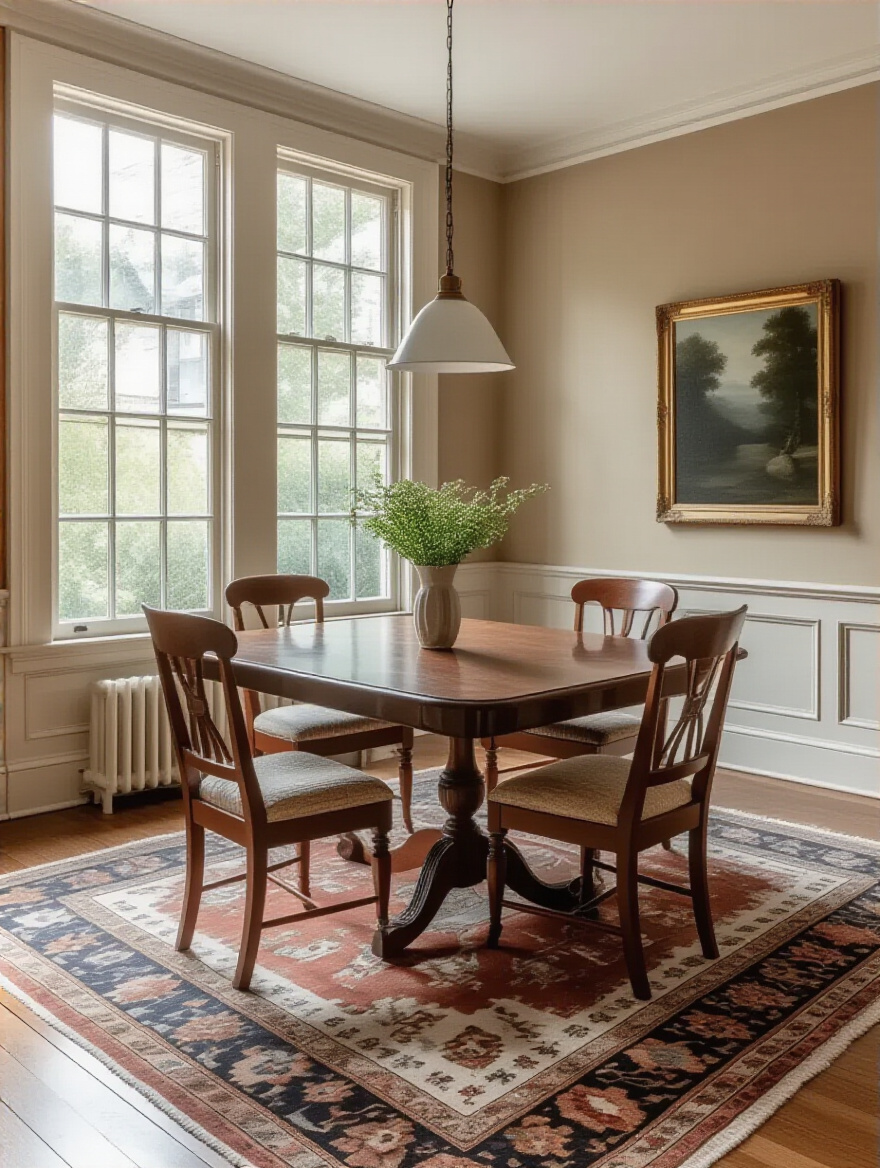
This isn’t about making a boring list; it’s about finding the hidden potential. I had a client who was convinced her dining room was a lost cause because of its cramped, off-center layout. But once we really assessed it, we realized the “weakness”—a huge, immovable built-in from the 80s—was actually a strength in disguise. We painted it a deep, moody green, added modern brass hardware, and turned it into an incredible bar and storage hub. By seeing what was really there, we turned the room’s biggest problem into its coolest feature.
So, instead of just cataloging what’s broken, start thinking like a stylist—how can you flip the script on the room’s existing story?
2. Define Your Desired Modern Aesthetic (e.g., Mid-Century, Scandinavian)
Don’t let the fancy designer terms intimidate you. “Aesthetic” is just a code word for the feeling you want the room to have. Forget about “Mid-Century Modern” or “Industrial” for a second and just ask yourself: What’s the vibe? Do you want it to feel like a cozy, lazy Sunday morning with a cup of coffee (hello, Scandinavian!) or a chic, buzzy cocktail party from a cool old movie (that’s your Mid-Century)? Pick a feeling first.
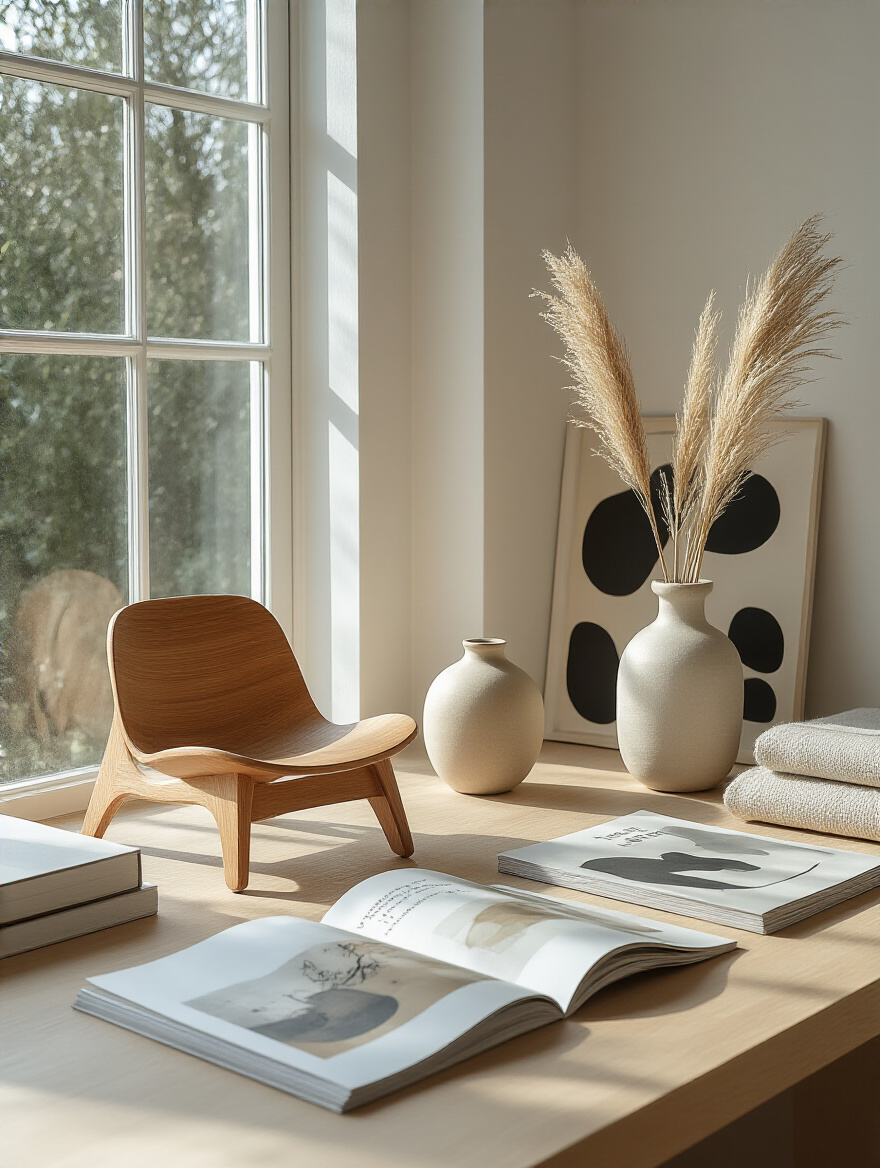
Once you have your vibe, that becomes your north star. Every single decision—from the table legs to the napkins—should serve that feeling. It’s the easiest shortcut I know to creating a room that feels cohesive and intentional instead of a random collection of stuff you like. When you have a clear direction, it automatically filters out 90% of the noise and makes shopping so much less overwhelming. You’re not just looking for “a new light fixture”; you’re looking for “a light fixture that feels warm, organic, and minimalist.” See the difference?
Your chosen vibe is your permission slip to say “no” to things that don’t fit, which is the most powerful design tool you can have.
3. Declutter Ruthlessly: Embrace Minimalism and Open Space
Let’s be real. No amount of decorating will fix a room that’s drowning in stuff. Before you can add anything new and beautiful, you have to create space for it to breathe. From my event planning days, I can tell you that the most stunning setups always start with a completely empty room. You need a blank canvas. It’s time to perform a full-on intervention with your dining room clutter.
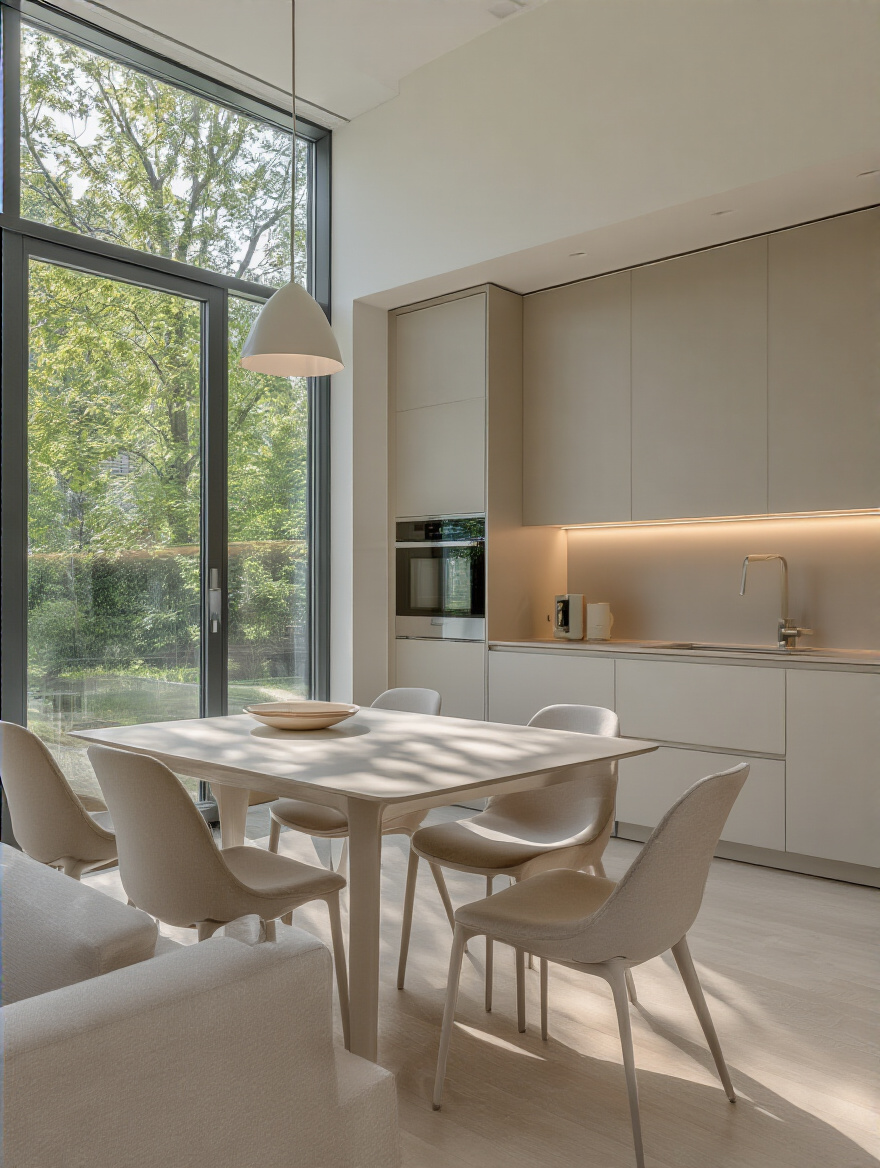
Take everything—and I mean everything that isn’t the table and chairs—out of the room. Every vase, every picture frame, every dusty stack of magazines. Put it all in the middle of the floor and force yourself to decide, item by item: does this serve a real purpose in here, or does it contribute to my modern vibe? If the answer is no, it’s got to go. Be brutal. The goal here isn’t just to tidy up; it’s to create what designers call “negative space”—the intentional emptiness that makes the beautiful things you do keep feel even more special.
Think of decluttering as an act of respect for the beautiful new things you’re about to bring in. Give them the stage they deserve.
4. Create a Digital Mood Board for Visualizing Your Vision
Okay, this might sound like a frivolous step, but trust me, it’s the single best way to prevent expensive, heartbreaking mistakes. A mood board—whether on Pinterest or a simple document—is your design playground. It’s where you can try out that bold wallpaper with that velvet chair next to that brass light fixture without spending a dime or breaking a sweat. It’s your secret playbook.
Think of it like planning a party outfit. You wouldn’t just buy a dress, shoes, and jewelry separately and hope they all work together when you get home. You’d lay them out and see how they feel as a group. Your mood board does the exact same thing for your room. Pin images of tables you love, colors that speak to you, and textures you want to touch. Then, step back and look at the whole picture. Does it all tell the same story? Does it reflect the vibe you chose? If something feels off, you can just delete it—way easier than trying to return a 200-pound sideboard.
A mood board isn’t just inspiration; it’s your final dress rehearsal before the big show.
Laying the Modern Foundation: Planning & Decluttering (Part 2)
Alright, you’ve done the soul-searching and the decluttering, and you’ve got a vision. Now comes the part that feels very grown-up but is absolutely essential: getting real about the logistics. Talking about money and schedules can feel like a buzzkill, but getting this right is what separates a dreamy, fun project from a stressful, over-budget nightmare.
5. Establish a Realistic Budget and Project Timeline
Let’s talk about money and time, the two elephants in any decorating project. You can have the best taste in the world, but without a realistic budget and timeline, you’re setting yourself up for failure. A budget isn’t a restriction; it’s a tool that forces you to be creative. It’s what helps you decide where to splurge (hello, statement light fixture!) and where to save (maybe that vintage sideboard just needs a coat of paint).
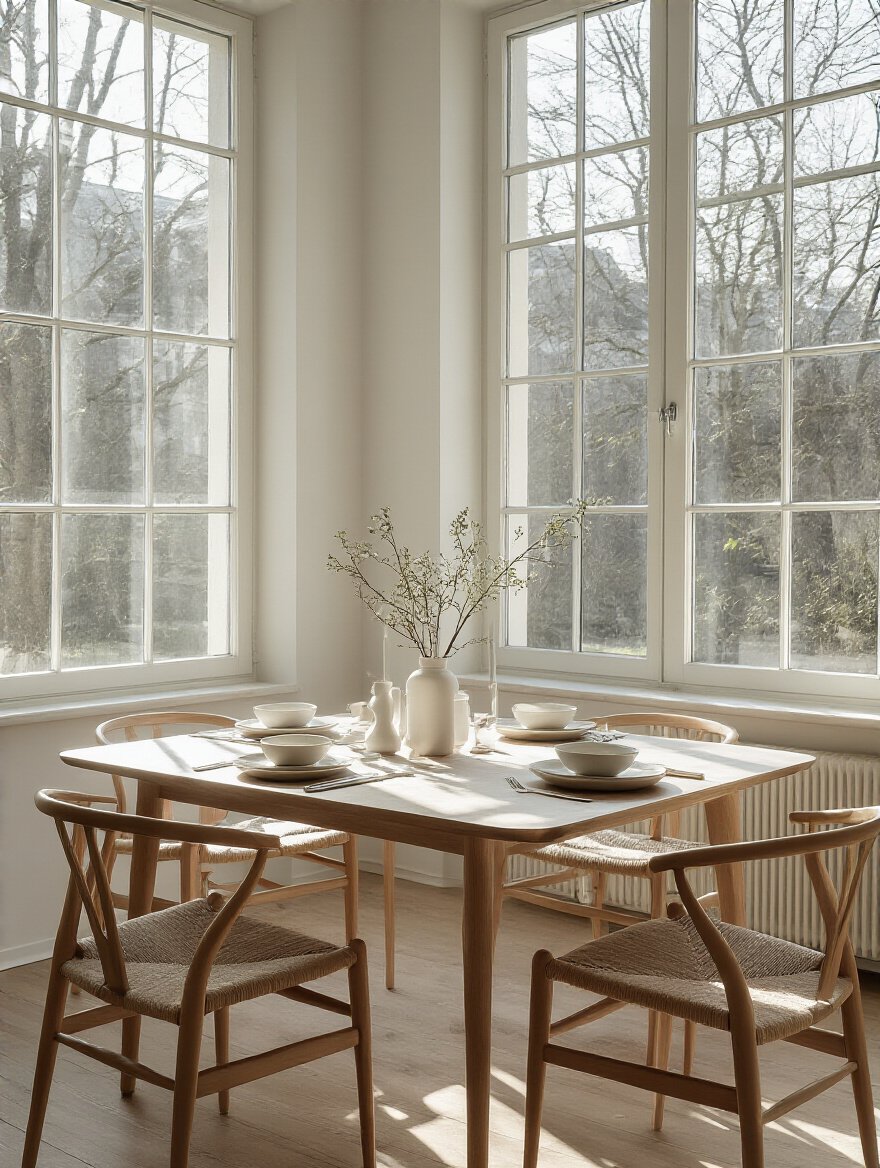
Start by listing every single thing you want to do, and then research the costs. Don’t forget the little things like shipping, taxes, and maybe even hiring an electrician. Here’s the pro tip I wish I knew years ago: add a 15% contingency fund. This is your “oops, that pipe behind the wall needs fixing” or your “oh my god, I just found the perfect piece of art and I have to have it” fund. It gives you breathing room. As for the timeline, be just as realistic. Everything takes longer than you think, so build in buffer time, especially if you’re waiting on furniture delivery.
Treat this like you’re the producer of your own home makeover show. A great producer never starts filming without a budget and a schedule.
Implementing Modern Style: Core Furniture & Finishes (Part 1)
Now for the fun stuff! With a solid plan in hand, we can start making the big moves that will totally transform the look and feel of your room. These are the core pieces—the big-ticket items that act as the stars of the show. Getting these foundational elements right is what will make all the smaller details shine.
6. Upgrade to a Sleek, Contemporary Dining Table Design
Your dining table isn’t just a piece of furniture; it’s the stage where all the magic happens. It’s the literal center of the room, so if you make one single upgrade, this should be it. Swapping a heavy, traditional, leggy table for something with clean lines and a lighter feel can instantly make the entire room feel bigger, brighter, and about a decade younger.
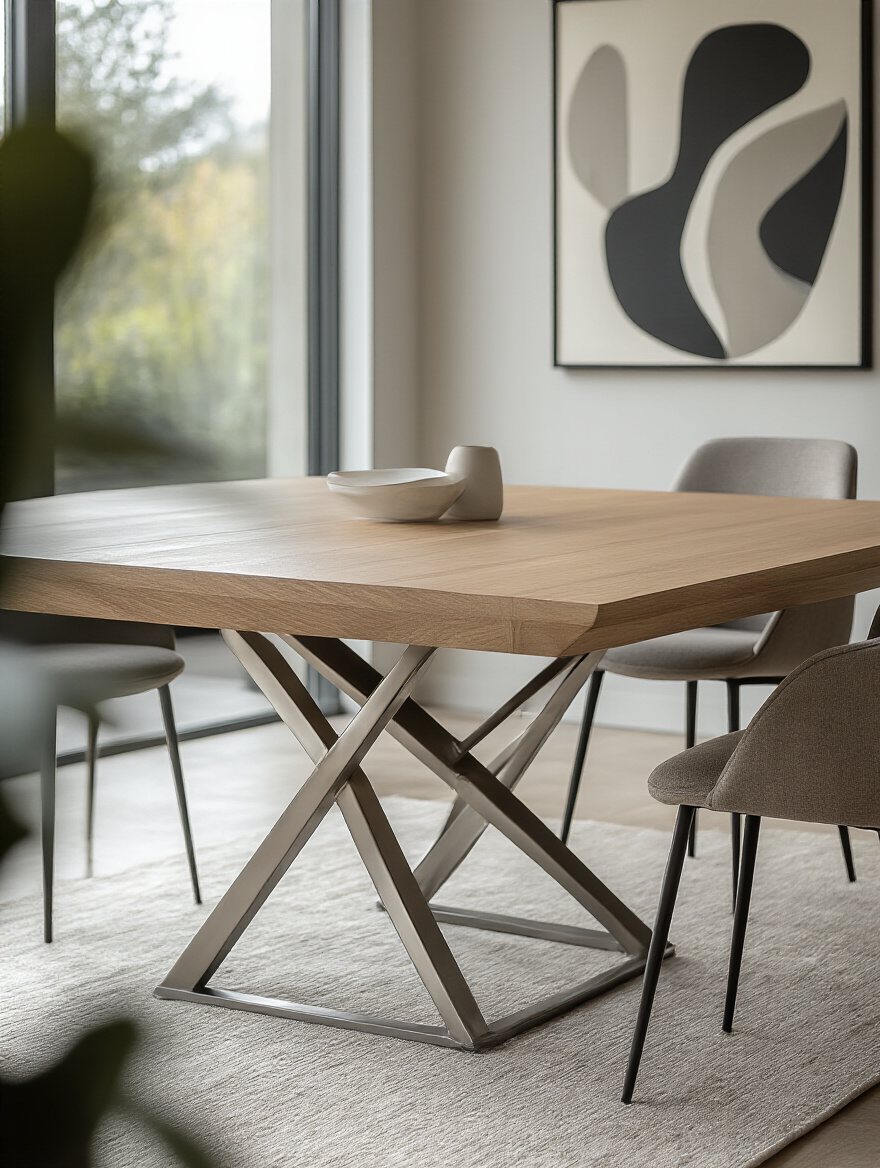
Think about “visual weight.” A glass-top table, for example, practically disappears, which is a fantastic trick for a smaller room. A table with slim, tapered legs or a single pedestal base feels much lighter and more modern than four thick, chunky legs. It’s not just about style; it’s about how the piece occupies space. Look for simple shapes—a clean rectangle, a welcoming circle—in modern materials like light wood, matte metal, or even a sleek laminate.
The right table sets the tone for everything else. It’s the anchor, the hero piece, the main character of your dining room story.
7. Choose Ergonomic and Visually Striking Dining Chairs
If the table is the stage, the chairs are the supporting actors that can absolutely steal the show. But here’s the thing everyone gets wrong: they pick chairs based on looks alone. Your chairs have one, very important job: to be so comfortable that your friends want to linger at the table for hours after the dessert plates have been cleared.
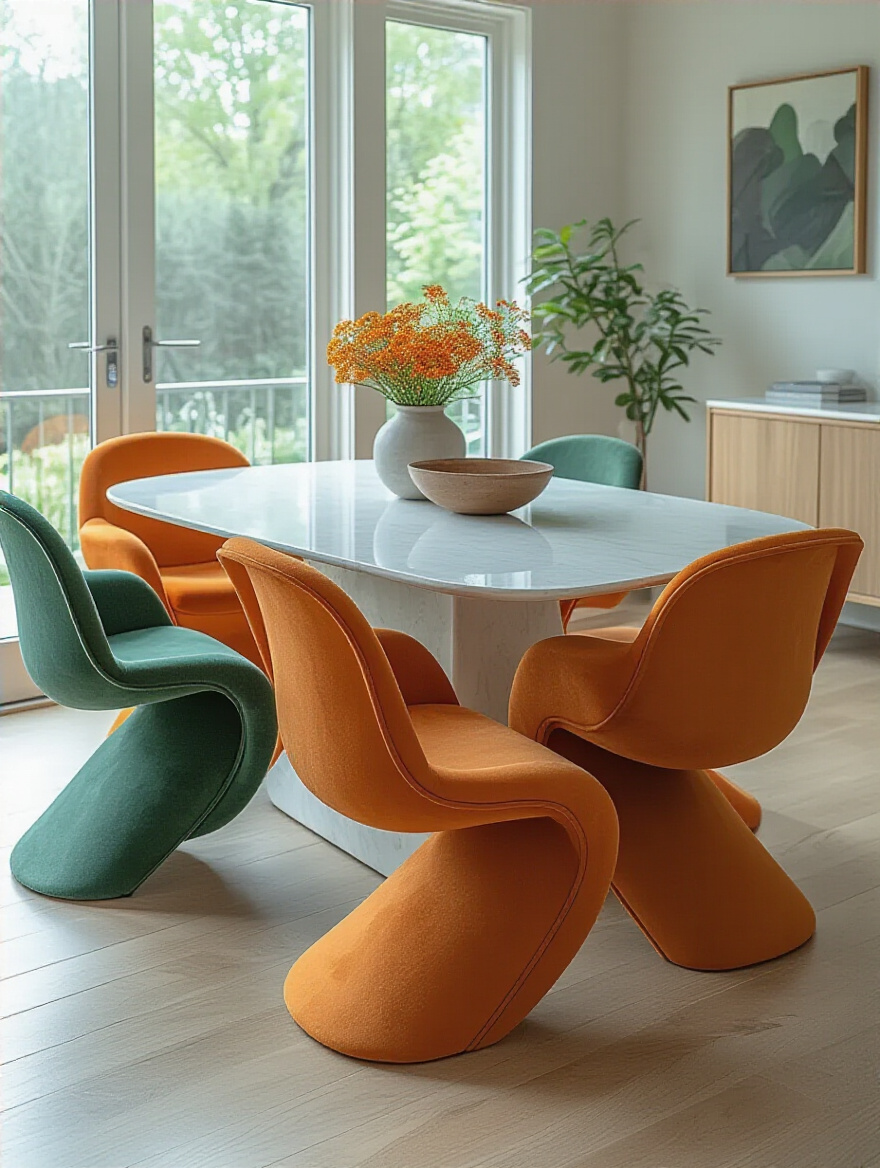
So, Rule #1 is comfort. Sit in them. Wiggle around. Can you imagine relaxing in one for three hours? Rule #2 is style. This is where you can have so much fun! You don’t have to get a perfectly matched set. In fact, mixing it up adds so much personality. Maybe you have two upholstered armchairs at the heads of the table and sleek, simpler chairs along the sides. As long as there’s a common thread—like the color of the wood or metal—it will look curated and chic, not chaotic.
Great chairs are an invitation. They say, “Stay a while. There’s more wine, more conversation, and no reason to leave.”
8. Install a Statement Modern Chandelier or Pendant Lighting
Lighting is the jewelry of a room, and your dining room deserves a showstopper piece. A dramatic, modern light fixture hanging over the table does more than just illuminate the space—it acts as a sculptural focal point. It’s the exclamation point of the whole design. If there’s one place to stretch your budget, this is often it.
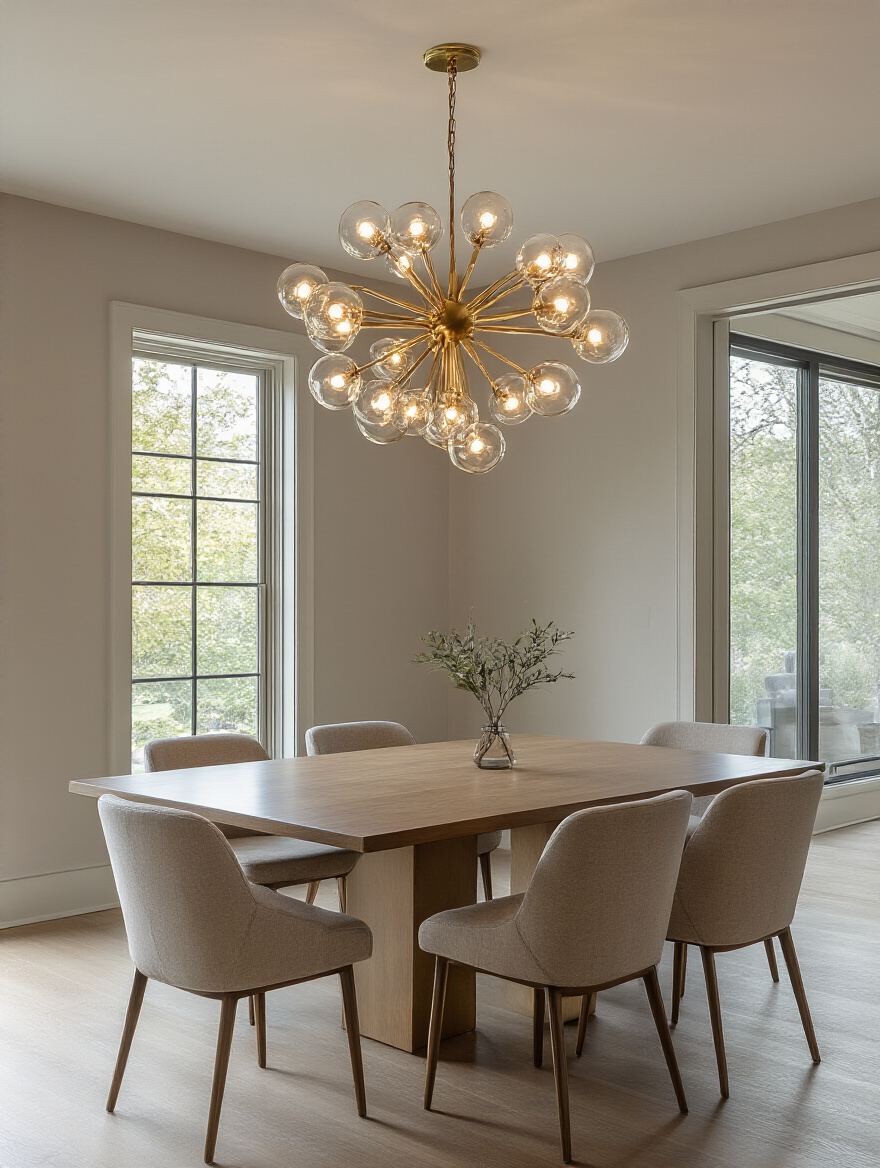
When choosing, think about scale. A fixture that’s too small will look dinky and lost, so it’s always better to go a little bigger than you think you need. And please, please, for the love of all things beautiful, install it on a dimmer switch. This is non-negotiable. The ability to go from bright, functional light for homework to a soft, moody glow for a dinner party is the cheapest, most effective magic trick in interior design.
A statement light doesn’t just light up a room; it gives the room its mood, its energy, and its soul.
9. Refresh Walls with a Neutral Paint Palette or Subtle Accent
Think of your wall color as the backdrop for your entire design. And just like on a stage, a simple, neutral backdrop makes the actors—your furniture, art, and guests—the true stars. Painting your walls in a soft white, a warm gray, or a sophisticated greige is one of the most powerful things you can do to modernize a space. It instantly feels cleaner, brighter, and more spacious.
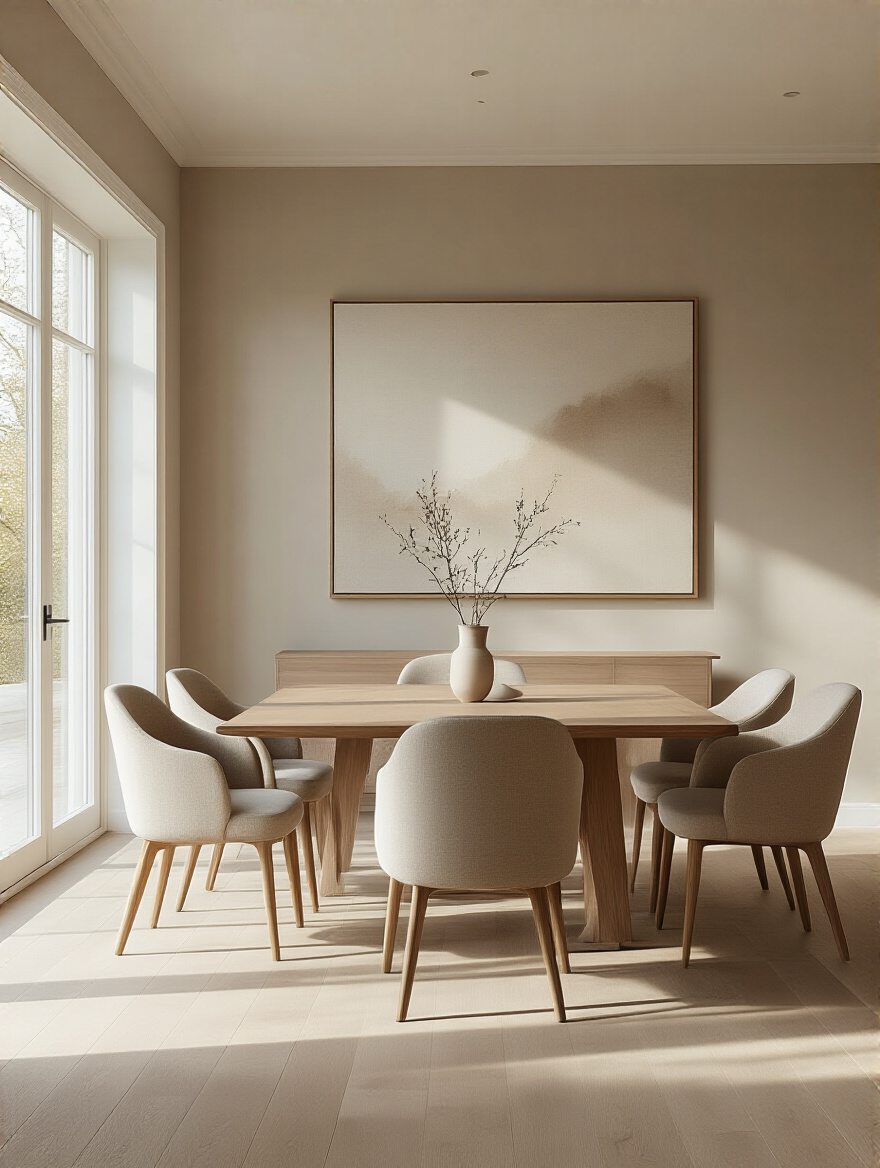
Here’s my secret stylist trick: a neutral palette is the key to effortless seasonal decorating. With calm walls as your canvas, you can change everything else with the seasons. Swap in deep velvet pillows and brass candlesticks for winter, then switch to breezy linen textiles and fresh green branches for spring—all without ever having to pick up a paintbrush. It gives you incredible flexibility and makes your room feel dynamic and alive all year long.
Your walls aren’t the main event; they are the stage that allows the main event to truly shine.
Implementing Modern Style: Core Furniture & Finishes (Part 2)
We’ve covered the big, eye-catching pieces. Now, let’s talk about the unsung hero of a truly functional, modern dining room. This next element is all about creating a space that looks effortlessly serene and uncluttered, even when it’s fully stocked for a fabulous party.
10. Integrate Practical and Visually Appealing Storage Solutions
Let’s be honest: a dining room comes with a lot of stuff. Plates, glasses, linens, serving platters, the fancy candlesticks you use once a year… you need a place for it all to live. The secret to modern design isn’t having less stuff; it’s having smarter places to hide it. A sleek sideboard, a floating credenza, or a tall buffet is absolutely essential.
Good storage is like having a silent, helpful butler. It keeps everything you need for entertaining close at hand but completely out of sight. Look for pieces with clean lines, minimal hardware (or cool push-to-open doors), that blend in rather than stand out. The top surface then becomes another opportunity for styling—a place for a lamp, a piece of art, a vase of flowers, or the perfect spot to set up a bar or dessert station during a party.
The goal is a room that looks beautifully minimalist but is secretly working overtime, keeping all your hosting essentials organized and ready to go.
Refining & Elevating: Decor, Art & Layered Lighting (Part 1)
Alright, the foundation is laid and the main furniture is in place. Now we get to the really fun part: layering in the details that give the room its personality and polish. This is where we take the space from “nicely decorated” to “professionally styled.”
11. Elevate Ambiance with Layered Lighting Solutions
One overhead light is not enough. I’m going to say that again: one overhead light is not enough! To create a truly warm and inviting space, you need to think about lighting in layers, just like you would with an outfit. This is maybe the biggest secret of high-end design, and it’s surprisingly easy to do.
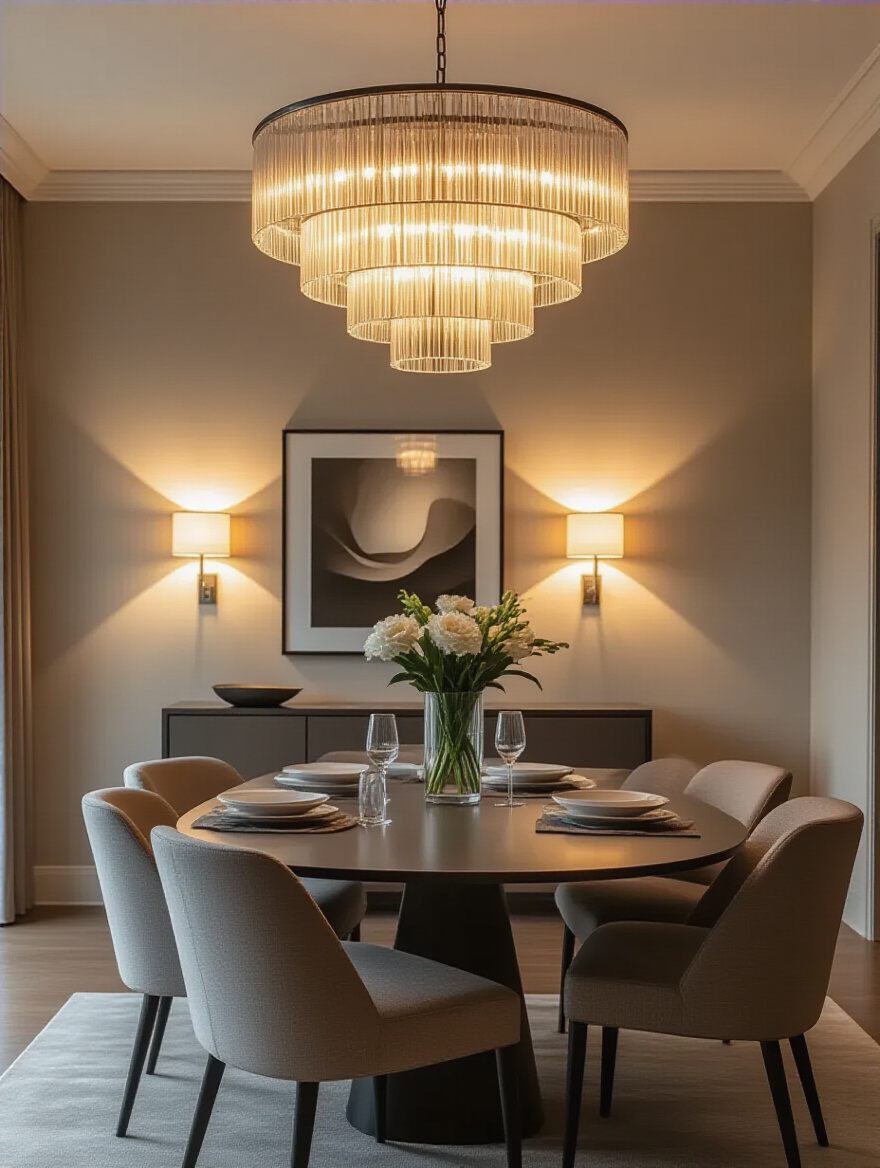
You need three types of light. First is Ambient, your main overhead light (that gorgeous chandelier we talked about), which provides overall illumination. Second is Task, which is focused light for a specific purpose, like a pair of stylish sconces above your sideboard for when you’re serving food. Third is Accent, which is all about mood. This is the little lamp in a dark corner or an uplight behind a plant that creates a soft, gentle glow. Combining these three makes your room feel rich, dynamic, and incredibly cozy. It’s like contouring for your room—it adds depth and makes everything look better.
Layering your light sources gives you total control over the mood, allowing you to create the perfect vibe for any occasion at any time of day.
12. Select Modern Tableware and Linens with Clean Lines
Your tabletop is a mini-stage that changes with every meal. You don’t need fussy, ornate china to create a beautiful setting. In fact, modern style is all about simplicity and quality materials. My advice? Invest in one great set of simple, clean-lined white dishes. Think of them as the “perfect white t-shirt” of your kitchen—they go with everything.
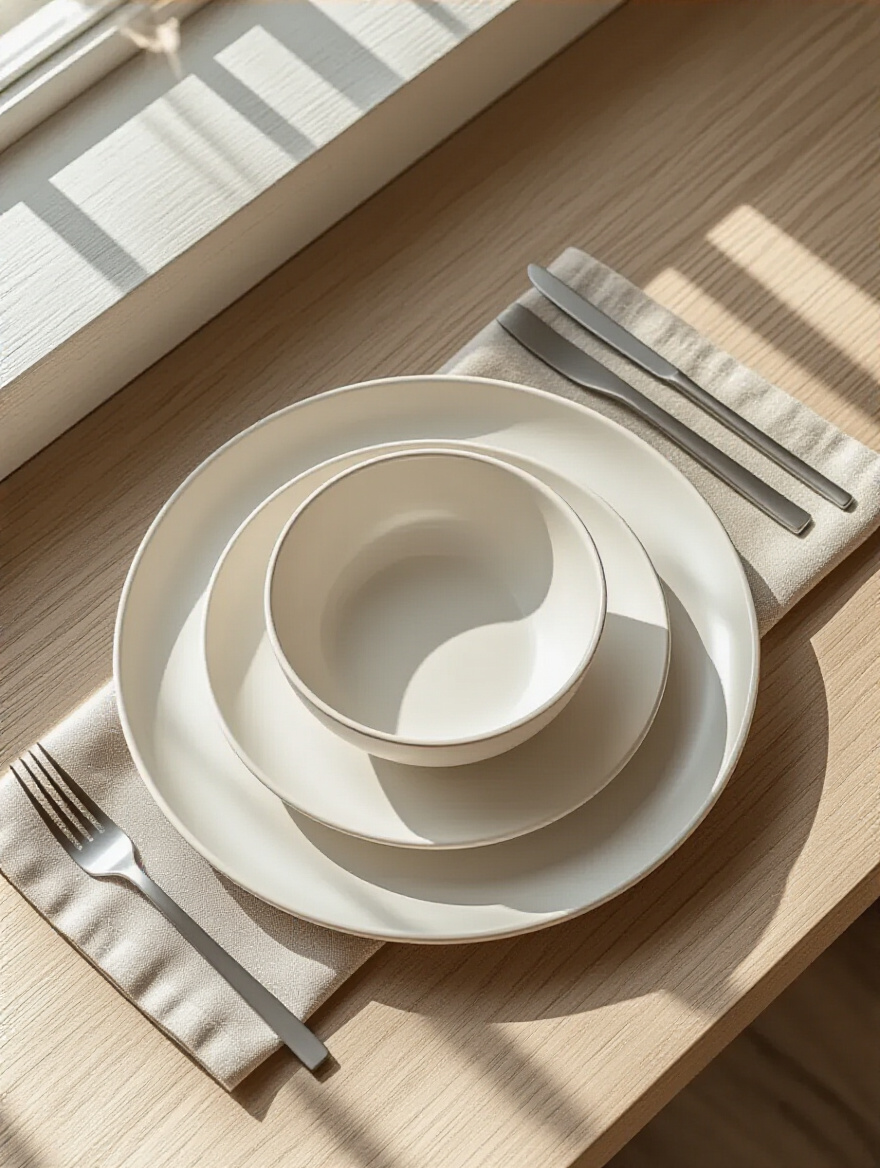
With that simple base, you can completely change the look and feel of your table just by swapping out the linens. Use beautiful, rumpled linen placemats and napkins for a relaxed, organic vibe. Switch to crisp, dark cotton for a more dramatic, formal feel. By keeping the plates simple, you allow the food, the flowers, and the textiles to be the star of the show. It’s an effortless, chic approach that never goes out of style.
Your tableware is the canvas. The linens and centerpiece are the art you paint on it for each specific meal.
13. Curate Abstract or Minimalist Wall Art as a Focal Point
Art is the conversation starter of a room. It injects personality, color, and emotion into your space. To keep it modern, my rule of thumb is to go big. Instead of a gallery wall of many small things, which can sometimes look cluttered, opt for one single, large-scale piece of abstract or minimalist art.
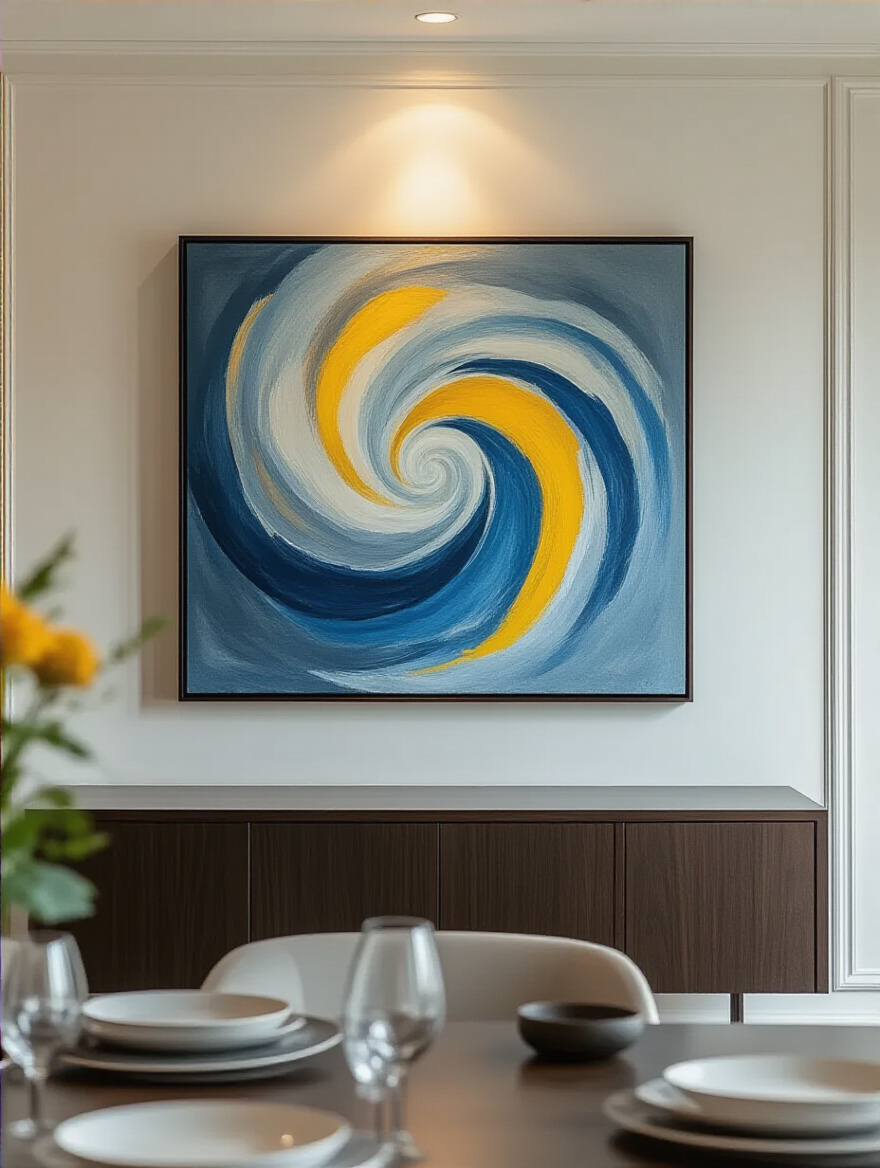
A large piece of art has incredible impact. It acts as a powerful focal point, drawing the eye and anchoring the entire room. It doesn’t have to be expensive! You can find amazing prints from artists online or even try making your own canvas with a simple, graphic design. The key is scale. Hang it over your sideboard or on the longest, most prominent wall, and let it command the space. It’s a bold, confident move that instantly elevates the whole room.
Think of your art not as a small accessory, but as a major architectural element of the room.
14. Introduce Greenery with Architectural Plants in Modern Planters
Every room needs something alive in it. It’s a non-negotiable for me. Plants literally breathe life into a space, adding natural texture, a pop of organic color, and a sense of calm. For a modern dining room, I love using what we call “architectural” plants—plants with strong, interesting shapes and clean silhouettes.
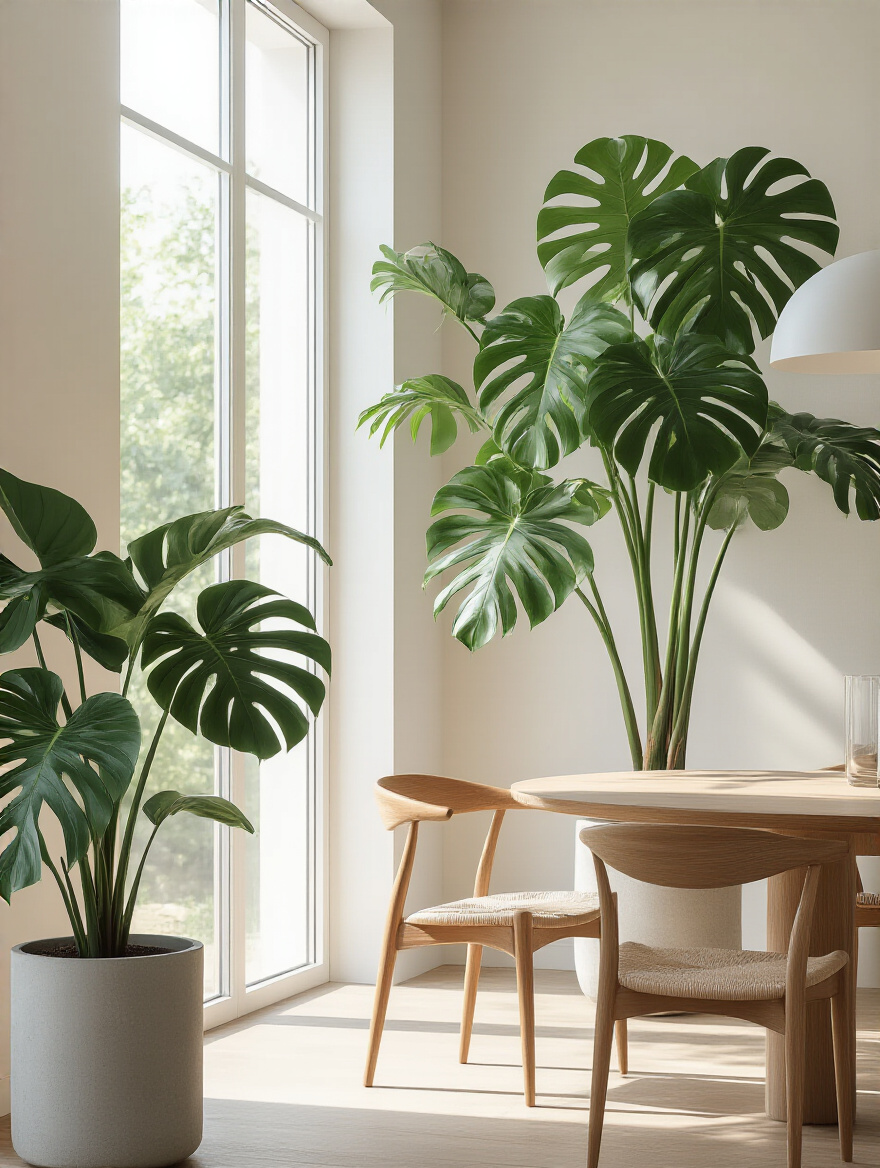
Think of a tall, dramatic Fiddle Leaf Fig in a corner, a spiky Snake Plant on a sideboard, or a quirky Monstera with its hole-filled leaves. These act less like fussy botanicals and more like living sculptures. Pot them in simple, modern planters—think matte ceramic, concrete, or sleek metal—that complement your decor. They add so much style and vitality without creating visual clutter.
Plants are the easiest way to ensure your sleek, modern room still feels warm, inviting, and connected to the natural world.
Refining & Elevating: Decor, Art & Layered Lighting (Part 2)
We’re almost there! We’ve layered in the lighting, art, and personal touches. Now, we’re going to add one more crucial element that will quite literally pull the entire room together and give it that final, finished look.
15. Place a Geometrically Patterned or Textured Area Rug
An area rug is the anchor for your entire dining setup. It’s the design element that visually holds your table and chairs together and declares, “This is the dining zone.” This is especially crucial in an open-concept home, where a rug can create a “room within a room” and prevent your furniture from feeling like it’s floating in space.
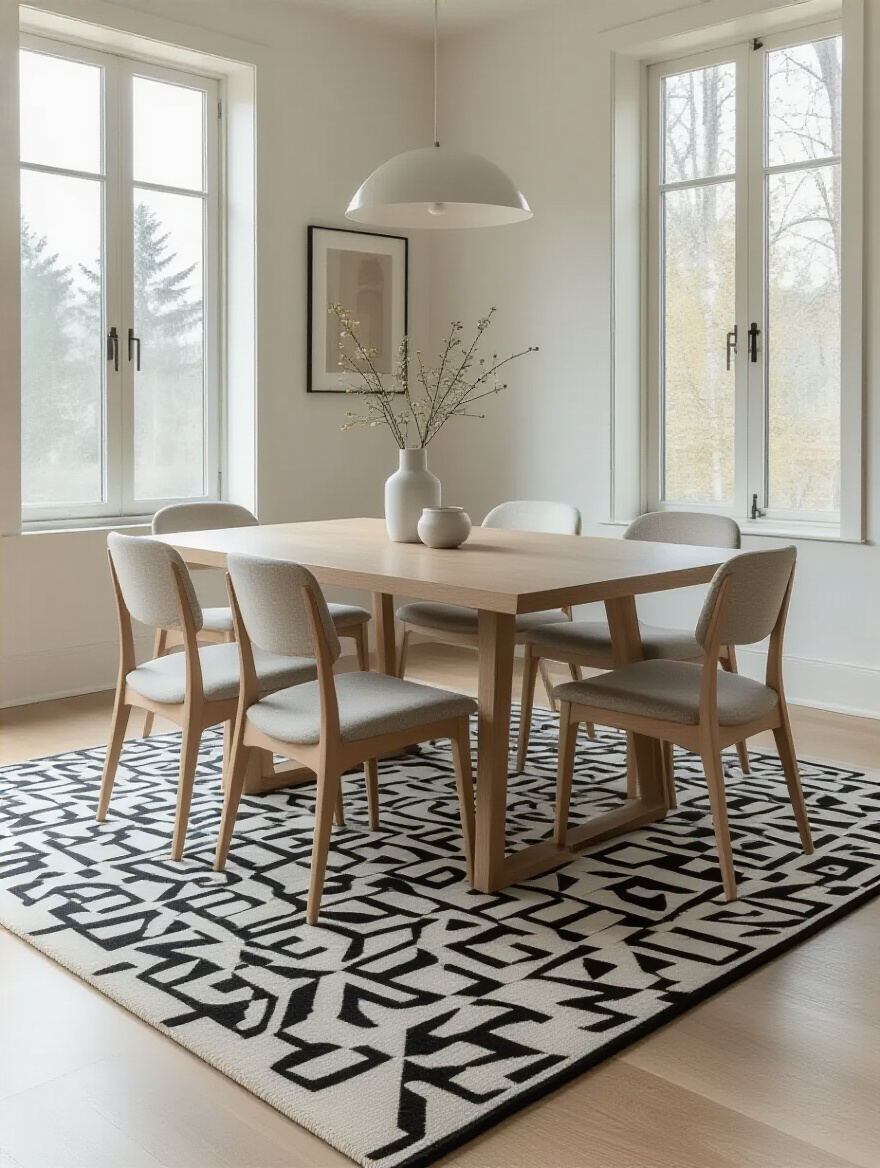
For a modern look, choose a rug with a bold geometric pattern or a rich, simple texture. Here’s the shortcut rule for sizing that you cannot ignore: all four legs of your chairs should still be on the rug even when they’re pulled out from the table. If people are catching the edge of the rug when they get up, it’s too small. A properly sized rug makes the space feel more generous and grounded, and it’s also a fantastic way to add a layer of color, pattern, and softness.
A great rug doesn’t just sit on the floor; it defines the entire space and pulls all the separate elements into one cohesive, beautiful story.
Advanced Touches & Future-Proofing for Longevity (Part 1)
You’ve mastered the core concepts, and your dining room is looking fantastic. Now we’re going to layer on some advanced, future-focused ideas. These are the touches that make a space feel not just current, but truly innovative, thoughtful, and built to last.
16. Integrate Smart Home Technology for Lighting and Audio
Ready to feel like you’re living in the future? Integrating smart technology is no longer a complicated, expensive luxury. It’s the ultimate modern convenience that can completely transform the atmosphere of your dining room with the tap of an app or a simple voice command.
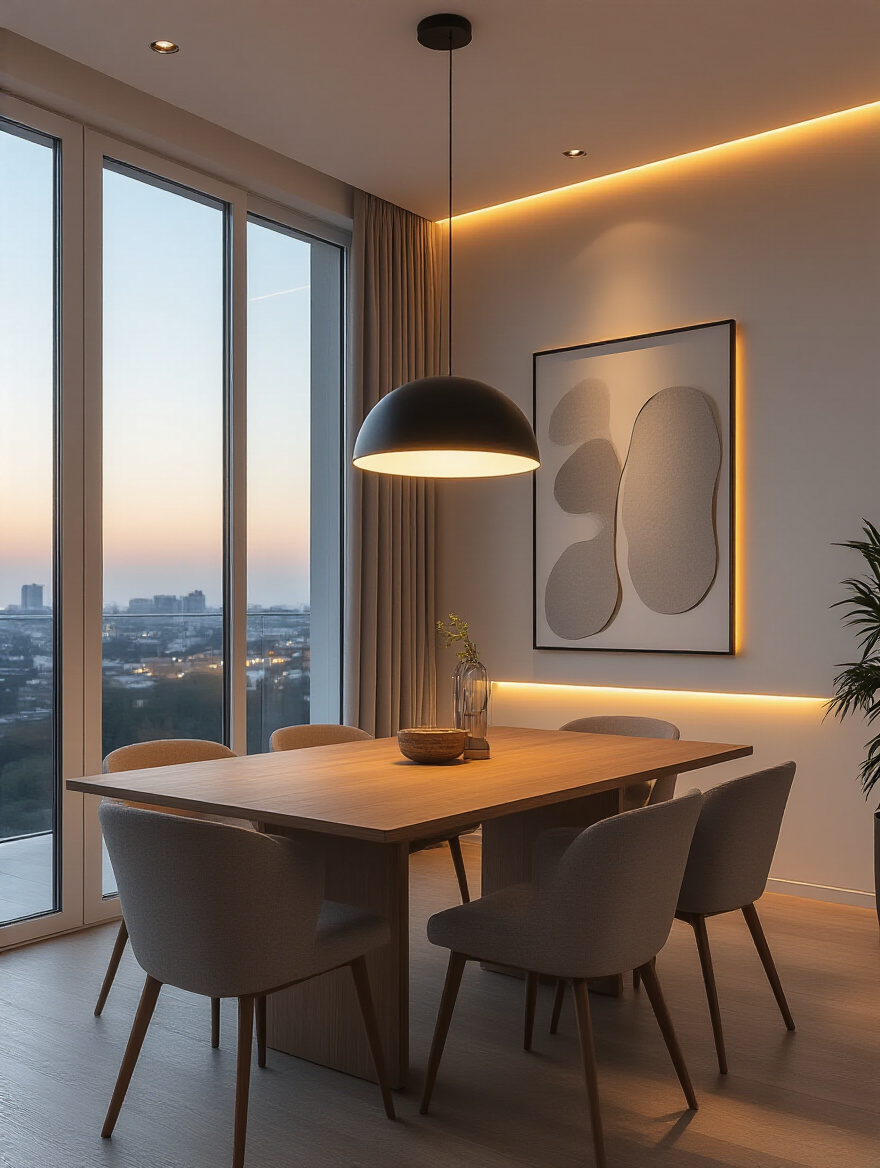
Imagine this: you’re having a dinner party. You say, “Hey Google, set the room to ‘Dinner Mode’.” Instantly, your chandelier dims to a warm glow, the accent lights turn on to highlight your art, and your curated jazz playlist begins to play softly from discreet speakers. It’s the ultimate party-hosting hack! Setting up smart bulbs, dimmer switches, and a simple smart speaker system allows you to create and save “scenes” for any mood, from bright and productive for a workday to low and romantic for date night.
Smart tech isn’t about being lazy; it’s about having effortless control over the entire sensory experience of your room.
17. Prioritize Sustainable and Durable Materials for Lasting Appeal
The most modern way of thinking about design is to think about longevity. The “fast fashion” approach to furniture is out. Instead, a truly modern space is built with high-quality, sustainable, and durable materials that are meant to last for decades, not just a few seasons. It’s about investing in what I like to call “future heirlooms.”
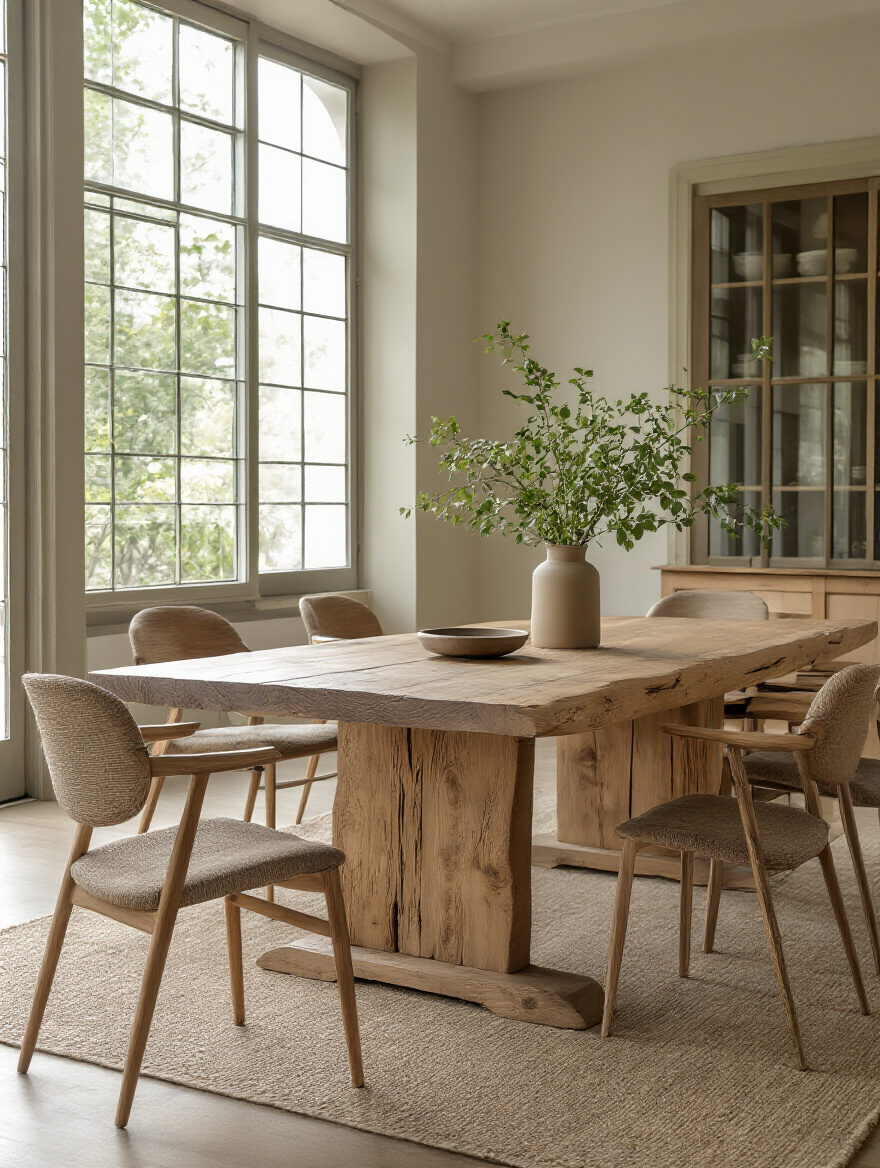
This means choosing a dining table made from solid, responsibly sourced wood instead of cheap particleboard. It means looking for chairs with sturdy, well-made frames and upholstery made from natural, resilient fibers. Not only are these choices better for the planet, but they also save you money in the long run because you won’t be replacing them every few years. These pieces will age gracefully, gaining character and patina over time, telling the story of the life lived around them.
Think of your furniture not as disposable decor, but as a long-term investment in quality, sustainability, and timeless style.
18. Introduce Reflective Surfaces like Mirrors or Metallic Accents
Need to make a small or dark dining room feel instantly bigger and brighter? Here’s the oldest and best trick in the book: mirrors. A large, strategically placed mirror is pure magic. It can visually double the size of your space and bounce light around the room, making everything feel more airy and expansive.
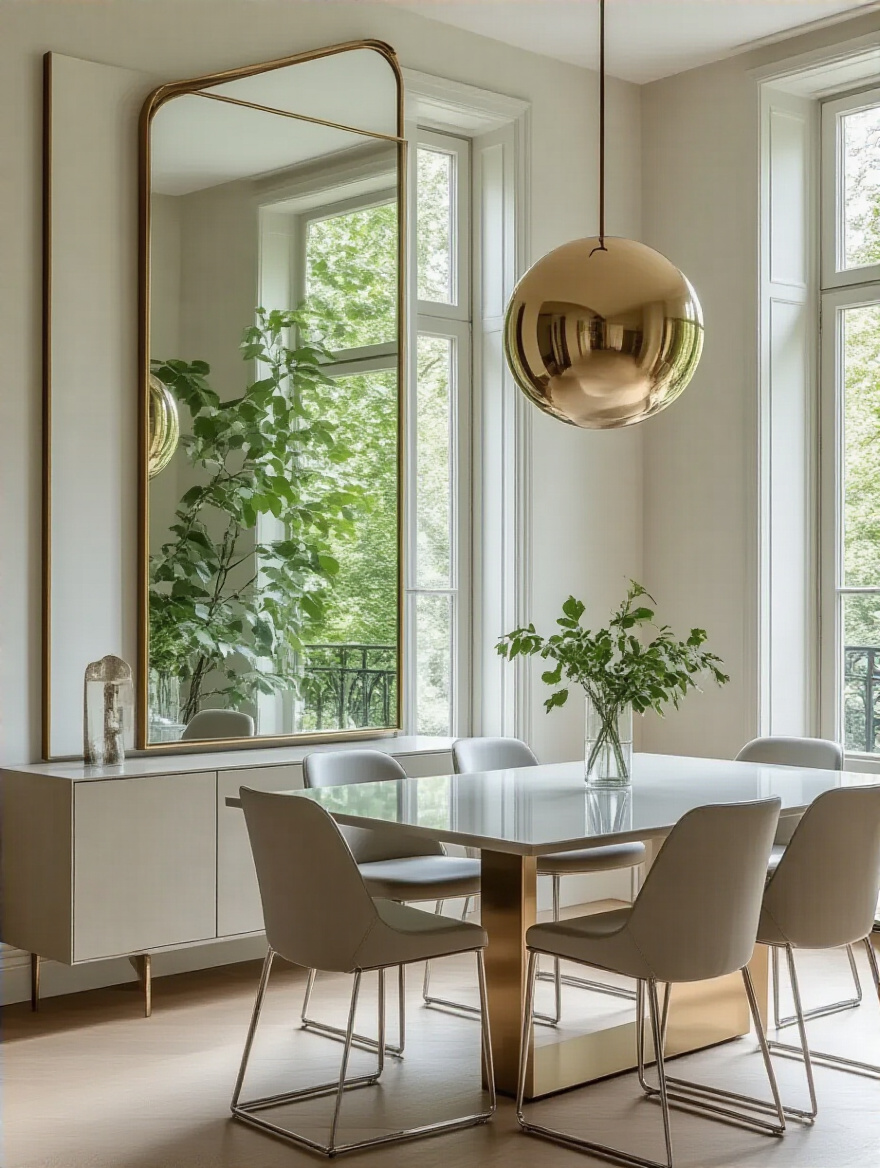
Place a large, simply framed (or unframed) mirror on the wall opposite a window to maximize its light-reflecting power. You can also bring in reflective surfaces through metallic accents. The warm gleam of a brass chandelier, the cool shine of polished chrome chair legs, or a collection of silver candlesticks on your sideboard—these small touches add a layer of glamour and sophistication, catching the light and creating a subtle sparkle that makes the whole room feel more dynamic.
Reflective surfaces are the secret weapon for adding light, depth, and a touch of everyday luxury to your dining space.
19. Personalize with Thoughtfully Curated Decorative Objects or Sculptures
A modern room should never feel cold or sterile. The final, most important layer is you. Your personality, your stories, your life. This is where you infuse the space with soul by adding thoughtfully chosen decorative objects. Resist the urge to buy generic, mass-produced “decor” from a big-box store.
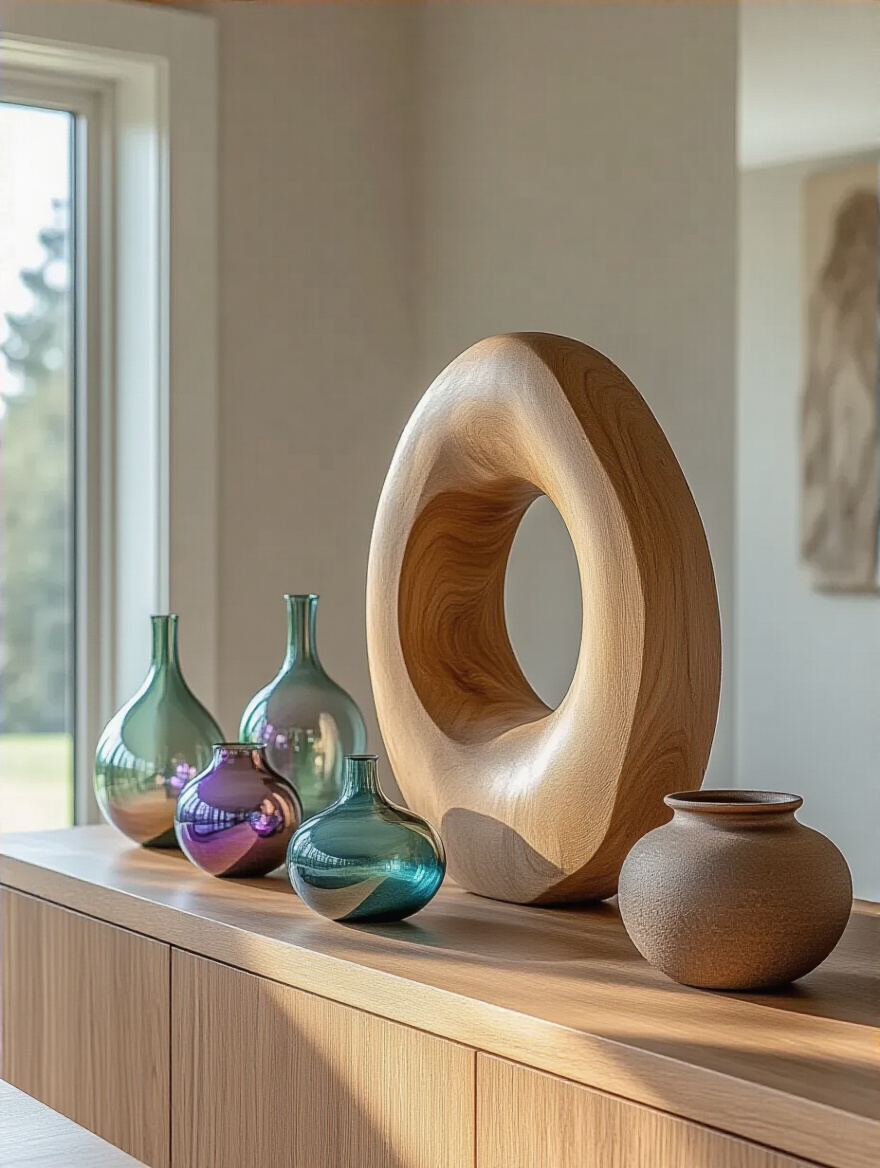
Instead, create a small, curated collection—or “vignette”—on your sideboard. Display a beautiful piece of pottery you picked up on vacation, a small sculpture from a local artist, a stack of your favorite art books, or an interesting wooden object you found at a flea market. These pieces tell a story. They’re what make your dining room uniquely yours, not something you could see in any catalog. This is your chance to be the curator of your own little home gallery.
Your home should be a reflection of your story. These personal objects are the footnotes that make it a fascinating read.
Advanced Touches & Future-Proofing for Longevity (Part 2)
We’ve reached the final, and perhaps most important, step in creating a truly modern dining room. This is the idea that ties everything together and ensures that the beautiful space you’ve created will continue to serve you, your family, and your life for years to come.
20. Ensure Versatility and Flexibility for Diverse Entertaining Needs
A modern dining room has to be a master of disguise. It cannot be a one-trick pony that only gets used for holiday dinners. The ultimate goal is to create a space so versatile that it becomes one of the most-used rooms in your house. It needs to be flexible enough for any and all occasions.
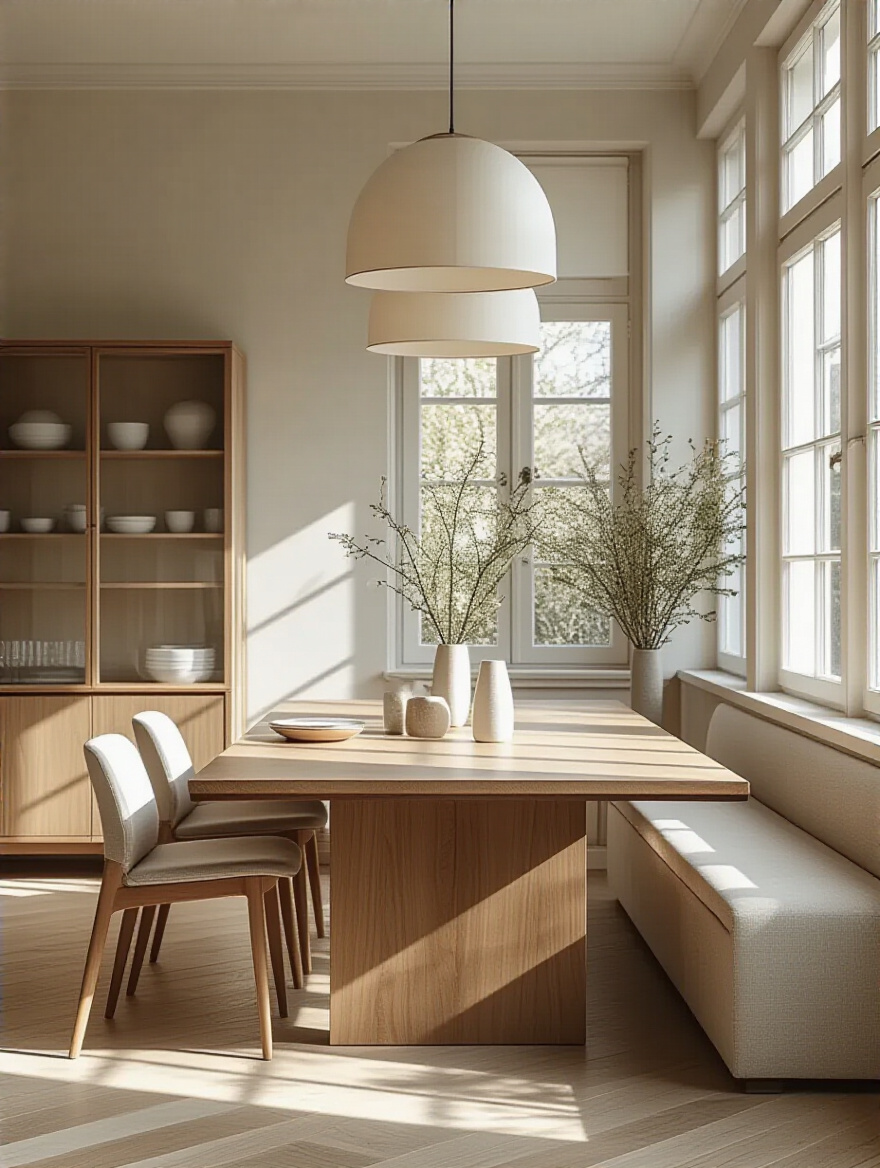
This means choosing an extendable table that can shrink for a Tuesday night family dinner and expand for a party of twelve. It means having a few extra stackable or foldable chairs that you can easily tuck away. It means designing the space so it can comfortably function as a quiet home office during the day, a messy craft station on a rainy weekend, or the central hub for a birthday party. Every choice should serve this goal of adaptability.
Stop thinking of it as just a “dining room” and start thinking of it as your home’s “flex space.” By building in versatility from the start, you ensure the room is never wasted, always useful, and truly a modern, hard-working part of your home.
Conclusion
There you have it! Modernizing your dining room isn’t about following a rigid set of rules; it’s about making thoughtful, intentional choices to create a space that is as functional as it is beautiful. It’s about turning a neglected, formal room into a dynamic, adaptable hub that reflects your life and celebrates the rhythm of the year. From the big impact of a new table to the subtle magic of layered lighting, each of these steps empowers you to craft a room that’s ready for anything—a quiet morning coffee, a lively dinner party, and all the memorable moments in between.
Your perfect dining room isn’t just a place to eat; it’s a backdrop for your life. It’s a space that should feel like you, work for you, and bring you joy every single day. So pick one idea from this list and just start. Begin the transformation. Your beautiful, modern, and incredibly useful dining room is waiting for you.
